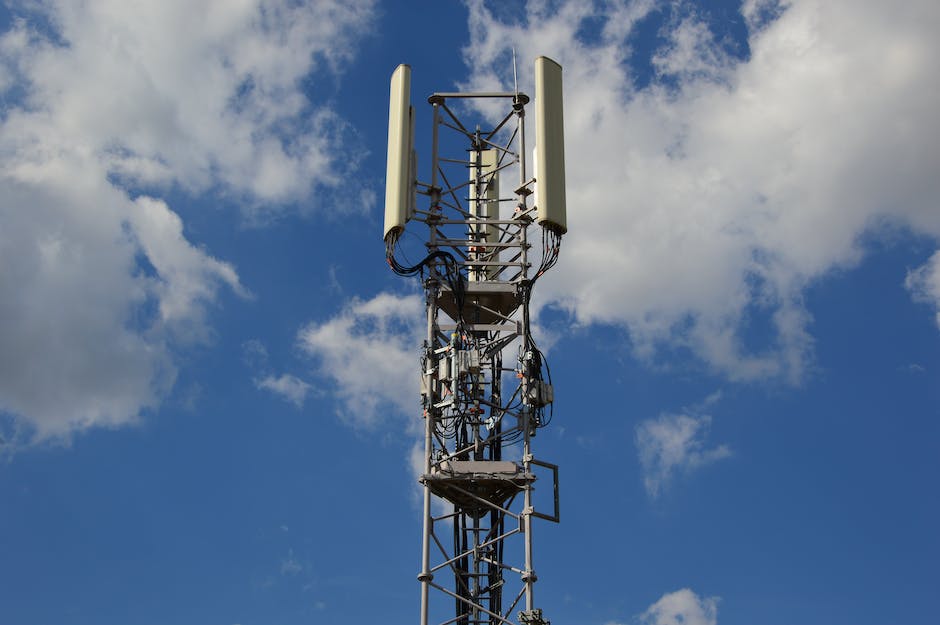Table of Contents
Unleashing Leadership Potential in the Era of 5G.
Introduction
Introduction:
As the world enters the age of 5G, leaders must adapt and thrive in this rapidly evolving technological landscape. The fifth generation of wireless technology, 5G, promises to revolutionize industries, enhance connectivity, and unlock new opportunities for businesses. However, with this transformative technology comes a new set of challenges and considerations for leaders. In this article, we will explore how leaders can navigate and thrive in the age of 5G, leveraging its potential to drive innovation, improve efficiency, and stay ahead in an increasingly competitive global market.
The Impact of 5G on Leadership Strategies

The advent of 5G technology has brought about significant changes in various industries, and leadership is no exception. As organizations embrace the potential of this new era, leaders must adapt their strategies to thrive in the age of 5G. This article explores the impact of 5G on leadership strategies and provides insights on how leaders can navigate this transformative landscape.
One of the key ways in which 5G technology influences leadership is by enabling faster and more efficient communication. With its lightning-fast speeds and low latency, 5G allows leaders to connect with their teams and stakeholders in real-time, regardless of geographical barriers. This enhanced connectivity opens up new possibilities for collaboration and decision-making, as leaders can now access and share information instantaneously.
Furthermore, 5G technology facilitates the integration of emerging technologies such as artificial intelligence (AI) and the Internet of Things (IoT). These technologies have the potential to revolutionize industries and disrupt traditional business models. Leaders who understand the implications of these technologies and can harness their power will have a competitive advantage in the market. For instance, AI-powered analytics can provide leaders with valuable insights and predictive capabilities, enabling them to make data-driven decisions and stay ahead of the curve.
In addition to communication and technology integration, 5G also brings about a shift in leadership styles. The increased connectivity and accessibility provided by 5G necessitate leaders to be more agile and adaptable. In this fast-paced environment, leaders must be able to respond quickly to changing circumstances and make informed decisions on the fly. This requires a shift from traditional hierarchical leadership models to more collaborative and decentralized approaches.
Moreover, 5G technology enables leaders to embrace remote work and flexible work arrangements. With the ability to connect to high-speed networks from anywhere, leaders can now manage their teams and operations remotely. This flexibility not only enhances work-life balance but also allows organizations to tap into a global talent pool. Leaders who can effectively manage remote teams and leverage the benefits of flexible work arrangements will have a competitive edge in attracting and retaining top talent.
However, with the benefits of 5G come new challenges for leaders. The increased connectivity and reliance on technology also bring about cybersecurity risks. Leaders must be vigilant in protecting their organizations’ data and systems from potential threats. This requires investing in robust cybersecurity measures and ensuring that employees are educated on best practices for data protection.
Furthermore, the rapid pace of technological advancements in the age of 5G requires leaders to be lifelong learners. Leaders must stay updated on the latest trends and developments in technology to effectively leverage its potential. This may involve attending conferences, participating in industry forums, or engaging in continuous learning programs. By staying ahead of the curve, leaders can guide their organizations through the ever-evolving landscape of 5G technology.
In conclusion, the age of 5G presents both opportunities and challenges for leaders. By embracing the potential of 5G technology, leaders can enhance communication, integrate emerging technologies, and adopt more agile leadership styles. However, they must also be mindful of cybersecurity risks and invest in continuous learning to stay ahead. As organizations navigate this transformative landscape, leaders who can adapt their strategies to thrive in the age of 5G will be well-positioned for success.
Leveraging 5G Technology for Effective Communication and Collaboration
The advent of 5G technology has brought about a new era of connectivity and communication. With its lightning-fast speeds and low latency, 5G has the potential to revolutionize the way we work and collaborate. For leaders, harnessing the power of 5G can be a game-changer in terms of effective communication and collaboration.
One of the key advantages of 5G technology is its ability to support a massive number of devices simultaneously. This means that leaders can connect with their teams and colleagues in real-time, regardless of their location. Whether it’s a video conference call or a collaborative project, 5G ensures that communication is seamless and uninterrupted.
Furthermore, 5G technology enables leaders to leverage advanced communication tools and platforms. With the increased bandwidth and speed, leaders can utilize high-definition video conferencing, virtual reality, and augmented reality to enhance collaboration. These tools allow for more immersive and engaging communication, fostering better understanding and teamwork among team members.
In addition to improved communication, 5G technology also enables leaders to leverage cloud-based collaboration tools. With the ability to access and share files in real-time, teams can collaborate on projects more efficiently. This eliminates the need for lengthy email chains and ensures that everyone is working on the most up-to-date version of a document. Leaders can also track progress and provide feedback in real-time, making the collaboration process more streamlined and effective.
Another benefit of 5G technology is its low latency, which refers to the time it takes for data to travel from one point to another. This low latency ensures that there is minimal delay in communication, allowing for more natural and productive conversations. Leaders can engage in real-time discussions without the frustration of lag or delays, leading to more efficient decision-making and problem-solving.
Moreover, 5G technology opens up new possibilities for remote work and flexible work arrangements. With the ability to connect to high-speed internet from anywhere, leaders can manage their teams and projects even when they are not physically present in the office. This flexibility not only enhances work-life balance but also allows leaders to tap into a global talent pool, expanding their team’s capabilities and expertise.
However, it is important for leaders to recognize that with the benefits of 5G technology come certain challenges. The increased connectivity and reliance on technology also bring about concerns regarding data security and privacy. Leaders must ensure that they have robust cybersecurity measures in place to protect sensitive information and prevent unauthorized access.
In conclusion, 5G technology presents leaders with a wealth of opportunities to enhance communication and collaboration. By leveraging the power of 5G, leaders can connect with their teams in real-time, utilize advanced communication tools, and leverage cloud-based collaboration platforms. The low latency of 5G ensures that communication is seamless and efficient, while the flexibility it offers allows for remote work and global collaboration. However, leaders must also be mindful of the security implications that come with increased connectivity. With the right strategies and precautions in place, leaders can thrive in the age of 5G and unlock the full potential of their teams.
Adapting Leadership Styles for the 5G Era
The advent of 5G technology has brought about significant changes in various industries, and leadership is no exception. As organizations embrace the potential of this new era, leaders must adapt their styles to thrive in the age of 5G. This article explores the key aspects of leadership that need to be considered in this fast-paced and interconnected world.
First and foremost, leaders must recognize the transformative power of 5G technology. With its lightning-fast speed and low latency, 5G enables real-time communication and data transfer like never before. This means that leaders can access information and make decisions more quickly, leading to increased efficiency and productivity. However, this also means that leaders need to be prepared to handle the influx of data and information that comes with 5G. They must develop the ability to filter through the noise and focus on what truly matters, making informed decisions in a timely manner.
Another crucial aspect of leadership in the 5G era is the need for agility and adaptability. 5G technology is constantly evolving, and leaders must be willing to embrace change and stay ahead of the curve. This requires a mindset shift from traditional hierarchical leadership to a more flexible and collaborative approach. Leaders must be open to new ideas and be willing to experiment and iterate. They should encourage a culture of innovation and empower their teams to take risks and learn from failures. By fostering a culture of adaptability, leaders can ensure that their organizations are well-positioned to leverage the full potential of 5G technology.
Furthermore, leaders must also consider the impact of 5G on their workforce. With the rise of remote work and the increasing use of mobile devices, leaders need to find new ways to engage and motivate their teams. They must leverage the power of 5G to enable seamless communication and collaboration, regardless of geographical location. This may involve investing in tools and technologies that facilitate virtual meetings, project management, and knowledge sharing. Additionally, leaders must also be mindful of the potential challenges that come with remote work, such as maintaining work-life balance and preventing burnout. They should prioritize employee well-being and provide the necessary support and resources to ensure their teams can thrive in the 5G era.
Lastly, leaders must also consider the ethical implications of 5G technology. As organizations collect and analyze vast amounts of data, leaders must ensure that privacy and security are prioritized. They must establish robust data protection measures and adhere to ethical guidelines to build trust with their stakeholders. Additionally, leaders must also consider the potential impact of 5G on society as a whole. They should be mindful of the digital divide and work towards bridging the gap to ensure that everyone can benefit from the advancements brought about by 5G.
In conclusion, leadership in the age of 5G requires a shift in mindset and approach. Leaders must embrace the transformative power of 5G, be agile and adaptable, and prioritize employee well-being. They must also consider the ethical implications of 5G and work towards building a more inclusive and equitable society. By doing so, leaders can thrive in the 5G era and lead their organizations towards success in this fast-paced and interconnected world.
Embracing Innovation and Disruption in the Age of 5G Leadership
How Leaders Can Thrive in the Age of 5G
In today’s fast-paced and interconnected world, leaders must constantly adapt to new technologies and innovations to stay ahead of the competition. One such technology that is set to revolutionize the business landscape is 5G. With its lightning-fast speeds and low latency, 5G has the potential to transform industries and create new opportunities for growth. However, to fully harness the power of 5G, leaders must embrace innovation and disruption.
First and foremost, leaders must understand the capabilities and implications of 5G. With speeds up to 100 times faster than 4G, 5G will enable real-time communication and data transfer on an unprecedented scale. This means that businesses will be able to collect and analyze vast amounts of data in real-time, allowing for more accurate decision-making and personalized customer experiences. Additionally, 5G will enable the widespread adoption of emerging technologies such as artificial intelligence, virtual reality, and the Internet of Things. Leaders must familiarize themselves with these technologies and explore how they can be integrated into their business strategies.
To thrive in the age of 5G, leaders must also foster a culture of innovation within their organizations. This means encouraging employees to think outside the box, take risks, and embrace change. Leaders should create an environment where ideas are welcomed and failure is seen as a learning opportunity. By fostering a culture of innovation, leaders can ensure that their organizations are constantly evolving and adapting to the changing business landscape.
Furthermore, leaders must be willing to disrupt their own business models. With the advent of 5G, traditional ways of doing business may no longer be viable. Leaders must be open to exploring new revenue streams, partnerships, and business models. They must be willing to challenge the status quo and take calculated risks. By embracing disruption, leaders can position their organizations as industry leaders and gain a competitive edge in the age of 5G.
In addition to embracing innovation and disruption, leaders must also prioritize cybersecurity in the age of 5G. With the increased connectivity and data transfer enabled by 5G, the risk of cyber threats and attacks also increases. Leaders must invest in robust cybersecurity measures and ensure that their organizations are prepared to defend against potential threats. This includes implementing encryption protocols, conducting regular security audits, and educating employees about best practices for cybersecurity. By prioritizing cybersecurity, leaders can protect their organizations and build trust with customers and stakeholders.
Lastly, leaders must stay informed about the latest developments and trends in the 5G landscape. Technology is evolving at an unprecedented pace, and leaders must stay ahead of the curve to remain competitive. This means attending industry conferences, networking with experts, and staying up to date with industry publications. By staying informed, leaders can identify new opportunities, anticipate challenges, and make informed decisions about the future of their organizations.
In conclusion, leaders must embrace innovation and disruption to thrive in the age of 5G. By understanding the capabilities and implications of 5G, fostering a culture of innovation, embracing disruption, prioritizing cybersecurity, and staying informed, leaders can position their organizations for success in the fast-paced and interconnected world of 5G. The age of 5G presents both challenges and opportunities, and it is up to leaders to navigate this new landscape and drive their organizations towards a prosperous future.
Q&A
1. How can leaders thrive in the age of 5G?
Leaders can thrive in the age of 5G by embracing the technology’s potential, understanding its impact on their industry, and adapting their strategies accordingly.
2. What are the key considerations for leaders in the age of 5G?
Leaders should consider the opportunities and challenges that 5G brings, such as faster connectivity, increased data volume, cybersecurity risks, and the need for infrastructure upgrades.
3. How can leaders leverage 5G to drive innovation and growth?
Leaders can leverage 5G to drive innovation and growth by exploring new business models, developing products and services that capitalize on faster connectivity, and utilizing data analytics to gain insights and make informed decisions.
4. What skills do leaders need to navigate the age of 5G successfully?
Leaders need skills such as technological literacy, strategic thinking, adaptability, and the ability to foster collaboration and innovation within their organizations to navigate the age of 5G successfully.
Conclusion
In conclusion, leaders can thrive in the age of 5G by embracing the opportunities and challenges that this technology brings. They should prioritize staying informed about the potential applications of 5G in their industry, adapt their business strategies to leverage its capabilities, and foster a culture of innovation and agility within their organizations. Additionally, leaders should invest in developing the necessary skills and expertise to effectively navigate the 5G landscape and capitalize on its transformative potential. By doing so, leaders can position themselves and their organizations for success in the era of 5G.





